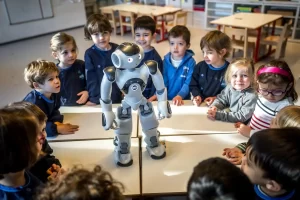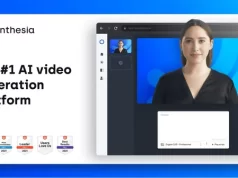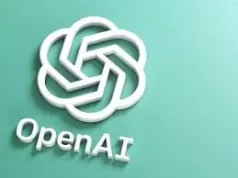In a nursery in Lausanne, Switzerland, three-year-olds gather in a circle on the floor to interact with a robot named Nao.


This robot, standing at just 58 centimeters tall, is introduced to the children as an “interactive learning companion,” rather than a replacement for their teachers.

Join our Telegram Channel for Updates
As the children arrive, Nao greets them with a child-like voice, expressing excitement to meet them and engage with them in the weeks ahead.
The presence of Nao in the nursery is seen as a way to prepare children for a future where interacting with robots may be commonplace.
Olivier Delamadeleine, director-general of the Educalis group overseeing the nursery, emphasizes the importance of familiarizing children with robots early on, as they may likely work with them in the future.
During the interaction, the children engage with Nao, asking questions and sharing their thoughts. Prompted by their teacher, they try to stump Nao with questions, finding amusement when he responds correctly.
Meanwhile, a master’s student in robotics, Gabriel Paffi, oversees Robot Nao’s responses and works on adapting the robot to better suit the nursery environment.
Robot Nao, a sixth-generation robot developed by the United Robotics Group, is expected to stay in the nursery for several years as his capabilities expand. The children eagerly anticipate Nao’s visits and have formed a bond with him, viewing him as a companion offering advice and knowledge.
Parents, like Guillaume Quentin, see robot Nao as a positive influence in helping children engage with new technologies and progress in their learning. As Nao bids farewell to the children at the end of the session, each child waves goodbye, anticipating his return.
Overall, Nao’s presence in the nursery represents a step towards integrating technology into early childhood education and preparing children for a future where human-robot interaction is commonplace.











